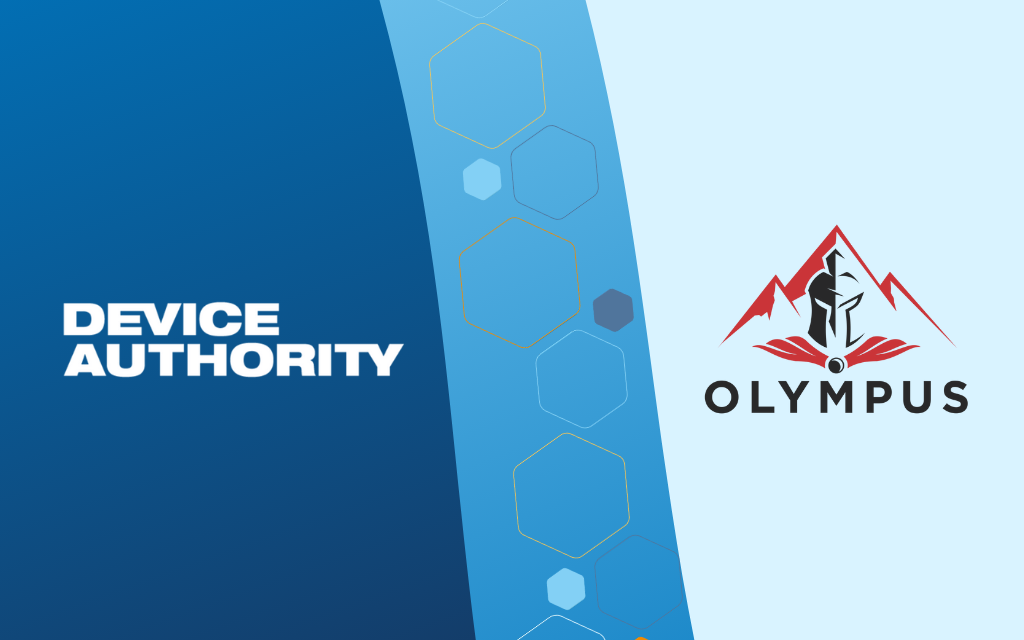Building Policy-Based Trust Anchors at the Edge
Building Policy-Based Trust Anchors at the Edge
Why device identity during manufacturing and onboarding is the foundation of Zero Trust security
The Problem We Face
When attackers exploit weak or default device identities, the result can be catastrophic: outages in energy grids, tampered medical devices, or halted manufacturing lines. The consequence is not just downtime, it’s risk to safety, national infrastructure, and regulatory compliance.
What’s new is that enterprises no longer need to accept these risks. By embedding policy-based trust anchors at the edge during manufacturing and onboarding, and automating their lifecycle, it’s possible to achieve Zero Trust for IoT and OT at scale.
Establishing Trust Anchors at the Edge
Device Authority’s KeyScaler® platform automates the provisioning of strong, unique identities for every device. These can be bound to TPMs or secure elements, or dynamically created with Dynamic Device Key Generation (DDKG) for devices without hardware roots of trust. By eliminating manual credentialing, KeyScaler reduces errors and scales security to millions of devices from the first day they connect.
From Identity to Policy Enforcement
A one-time identity is not enough. Devices must be continuously validated and governed by enterprise policies. Together with Olympus, Device Authority ensures that trust anchors integrate into IAM systems where policies adapt based on context, health, and behavior. If a device deviates, the system can restrict, quarantine, or revoke its credentials automatically.
Brownfield Devices: A Realistic Plan
Enterprises rarely start fresh. Many fleets include legacy devices with no TPM or embedded secure element. For these brownfield deployments, KeyScaler supports:
- DDKG for software-based strong identities
- TOFU (Trust on First Use) combined with rapid re-enrollment for initial provisioning
- Gateway attestations to validate devices that cannot attest directly
This means enterprises can bring old and new devices into the same trust framework, closing gaps attackers often exploit.
High-Stakes Sectors
Healthcare, energy, automotive, and manufacturing are where device identity matters most. In hospitals, infusion pumps and patient monitors must be verified to protect patient safety. In utilities, attackers who spoof smart meters or SCADA systems can disrupt essential services. In factories, unverified robots can halt production or leak IP. And in connected vehicles, enforcing identity for ECUs and V2X units is already a compliance requirement under UNECE WP.29 and ISO/SAE 21434.
A Lifecycle Approach with Compliance in Mind
Policy-based trust anchors extend across the full device lifecycle: onboarding, credential rotation, attestation, and secure decommissioning. This isn’t just operational best practice — it directly maps to compliance:
- NIST 800-207 (Zero Trust Architecture) — enforcing identity-first access
- IEC 62443 — securing industrial control systems across their lifecycle
- EU Cyber Resilience Act (CRA) — meeting 2027 obligations for secure-by-design and lifecycle assurance
KeyScaler and Olympus produce the evidence artifacts auditors require: attestation logs, certificate inventories, and credential rotation reports, all accessible for compliance reviews.
Preparing for the Future: Crypto-Agility
The crypto landscape is shifting. RSA and ECC will not stand against quantum computing. Device Authority and Olympus support crypto-agile frameworks, enabling smooth migration to the new NIST standards:
- FIPS 203 (ML-KEM)
- FIPS 204 (ML-DSA)
- FIPS 205 (SLH-DSA)
This ensures investments made today remain secure tomorrow, without rip-and-replace cycles that cripple operations.
The Business Impact
Automated trust anchors and policy enforcement deliver measurable value:
- 12x lower costs compared to manual credentialing, as proven in an automotive deployment
- Faster incident response through automated quarantine
- Simplified audit readiness with continuous evidence
- Extended lifespan of legacy fleets without compromising security
Conclusion: Trust Anchors as the Foundation of Zero Trust
Zero Trust cannot succeed without cryptographically strong, continuously validated device identities. By embedding trust anchors during manufacturing and onboarding, Device Authority provides the foundation for policy enforcement at scale.
